Planning performance statistics: annual and quarterly reports, 2012-2016
Statistics on planning decision-making and timescales between the periods 2012 to 2013 and 2015 to 2016.
3. Annual average decision times by Development Type
3.1 Local Developments
Local developments include applications for changes to individual houses and smaller developments for new housing as well as other applications covering areas of development such as, minerals, business & industry, waste management, electricity generation, freshwater fish farming, marine finfish farming, marine shellfish farming, telecommunications, approval of matters specified in conditions ( AMSCs) and other developments. Applications for approval of matters specified in conditions ( AMSCs) relate to conditions attached to planning permission in principle requiring the further approval, consent or agreement of the planning authority for any detailed aspect of the development ( Annual, 2015/16: Scotland table).
Chart 13: Post 3rd August 2009, Local Development Planning Applications, 2015/16: Number of decisions
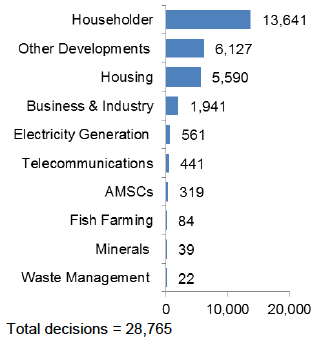
Chart 14: Post 3rd August 2009, Local Development Planning Applications, 2015/16: Average decision time (weeks)
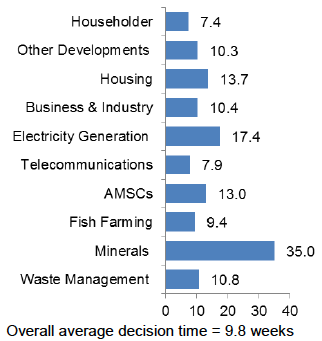
Chart 15: All Local Development Planning Applications, 2015/16: Number of decisions
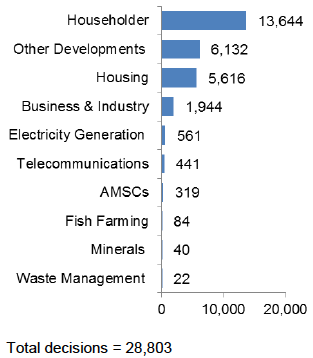
Chart 16: All Local Development Planning Applications, 2015/16: Average decision time (weeks)
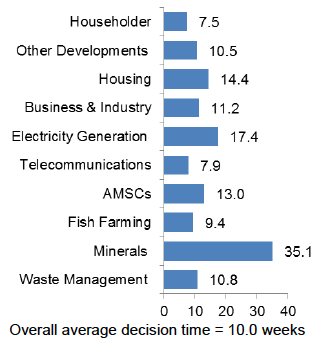
The category "other developments" includes applications for retail developments, food and drink outlets, hotels, hospitals, schools and leisure & tourism developments.
The average decision time for the 28,765 post 3rd August 2009 local applications in 2015/16 was 9.8 weeks, quicker by an average of almost 3 days per application compared with 2014/15 (10.1 weeks) and the quickest annual average since the start of this data collection in 2012/13. When the 38 legacy cases are included the average decision time increases from 9.8 weeks to 10.0 weeks.
Charts 13 and 14 show that the average decision time varies between types of development. The largest share of local developments is for householder developments (over 47%) that have the shortest decision time of on average 7.4 weeks. Minerals applications (0.1% of all local decisions) have the longest average decision time equal to 35.0 weeks. Legacy cases can skew average decision times. For example, when the 26 legacy cases are included in the average decision time for housing developments the average increases from 13.7 to 14.4 weeks.
During the year 2015/16 there were 479 local housing application decisions where the clock had been stopped at some point within the application process (8.5% of all local housing application decisions). On average almost 42 weeks has been removed for these applications, and this will have had an effect on the overall average decision times. For the previous year, there were 349 local housing application decisions where the clock had been stopped at some point (6.0% of all local housing application decisions). This improvement in reporting is likely to lower some overall decision times between years. See Annex 14.1 for further details.
Some local developments are subject to Environmental Impact Assessments ( EIAs). Results for these developments are not included here and instead are reported separately in the detailed tables (Annual, 2015/16: Tables 23 & 28).
In addition, there were 514 local developments decided in 2015/16 that had processing agreements in place, with almost 79% of these meeting agreed timescales. Developments with processing agreements are not included in average time calculations.
Tables 1 & 2 give comparable figures for the previous three years. In 2015/16 there were improvements in average decision times (post 3rd August) for 8 out of the 10 local development types compared to 2014/15. Waste Management developments had the biggest improvement in average decision time from 17.8 weeks to 10.8 weeks. For telecommunications and minerals developments there were increases in average decision times compared to 2014/15. The increase in the average decision time for minerals developments can partly be explained by six applications with decision times longer than one year, one in Falkirk, two in Aberdeenshire and three in Shetland.
When legacy cases are included there are improvements in average decision times for 6 out of the 10 local development types compared to 2014/15.
Table 1: Post 3rd August 2009 local applications, Annual average decision times by Development Type
| Post-3rd August Local Developments | 2012/13 | 2013/14 | 2014/15 | 2015/16 | ||||
|---|---|---|---|---|---|---|---|---|
| Number of decisions | Average decision time (weeks) | Number of decisions | Average decision time (weeks) | Number of decisions | Average decision time (weeks) | Number of decisions | Average decision time (weeks) | |
| Householder | 13,446 | 8.0 | 13,904 | 7.7 | 14,115 | 7.5 | 13,641 | 7.4 |
| Other Developments | 5,822 | 11.3 | 6,258 | 10.5 | 6,099 | 10.4 | 6,127 | 10.3 |
| Housing | 5,563 | 17.2 | 5,762 | 15.2 | 5,807 | 14.5 | 5,590 | 13.7 |
| Business & Industry | 2,531 | 11.8 | 2,370 | 11.1 | 2,257 | 10.7 | 1,941 | 10.4 |
| Electricity Generation | 1,247 | 21.2 | 861 | 23.1 | 626 | 22.4 | 561 | 17.4 |
| Telecommunications | 301 | 8.5 | 404 | 8.5 | 416 | 7.6 | 441 | 7.9 |
| AMSCs | 255 | 16.3 | 302 | 17.4 | 318 | 14.8 | 319 | 13.0 |
| Fish Farming | 43 | 10.6 | 63 | 12.5 | 53 | 13.3 | 84 | 9.4 |
| Minerals | 35 | 26.9 | 47 | 15.8 | 25 | 17.7 | 39 | 35.0 |
| Waste Management | 89 | 16.3 | 55 | 19.4 | 23 | 17.8 | 22 | 10.8 |
| TOTAL | 29,332 | 11.4 | 30,026 | 10.6 | 29,739 | 10.1 | 28,765 | 9.8 |
Table 2: All local applications, Annual average decision times by Development Type
| All Applications Local Developments | 2012/13 | 2013/14 | 2014/15 | 2015/16 | ||||
|---|---|---|---|---|---|---|---|---|
| Number of decisions | Average decision time (weeks) | Number of decisions | Average decision time (weeks) | Number of decisions | Average decision time (weeks) | Number of decisions | Average decision time (weeks) | |
| Householder | 13,450 | 8.1 | 13,904 | 7.7 | 14,116 | 7.5 | 13,644 | 7.5 |
| Other Developments | 5,833 | 11.7 | 6,264 | 10.8 | 6,102 | 10.5 | 6,132 | 10.5 |
| Housing | 5,671 | 20.9 | 5,831 | 17.5 | 5,836 | 15.3 | 5,616 | 14.4 |
| Business & Industry | 2,548 | 13.0 | 2,385 | 12.9 | 2,259 | 10.9 | 1,944 | 11.2 |
| Electricity Generation | 1,251 | 21.7 | 863 | 23.5 | 626 | 22.4 | 561 | 17.4 |
| Telecommunications | 301 | 8.5 | 404 | 8.5 | 416 | 7.6 | 441 | 7.9 |
| AMSCs | 255 | 16.3 | 303 | 18.0 | 319 | 15.1 | 319 | 13.0 |
| Fish Farming | 43 | 10.6 | 63 | 12.5 | 53 | 13.3 | 84 | 9.4 |
| Minerals | 36 | 31.6 | 49 | 22.3 | 25 | 17.7 | 40 | 35.1 |
| Waste Management | 95 | 28.7 | 57 | 26.8 | 23 | 17.8 | 22 | 10.8 |
| TOTAL | 29,483 | 12.4 | 30,123 | 11.3 | 29,775 | 10.3 | 28,803 | 10.0 |
3.2 Major Developments
Major developments include applications for developments of 50 or more homes, as well as other applications covering areas of development such as minerals, housing, business & industry, waste management, electricity generation, freshwater fish farming, marine fish farming, marine shellfish farming and other developments. Classification between local and major developments depends on the particular development type. For example, housing developments are classed as major when the application is for 50 or more dwellings or for a site that exceeds two hectares, whereas electricity generation is classed as major when the capacity of the generating station is or exceeds 20 megawatts ( Annual, 2015/16: Scotland table).
Details for the classification of all development types can be found here: http://www.gov.scot/Resource/Doc/278390/0083657.pdf
Chart 17: Post 3rd August 2009, Major Development Planning Applications, 2015/16: Number of decisions
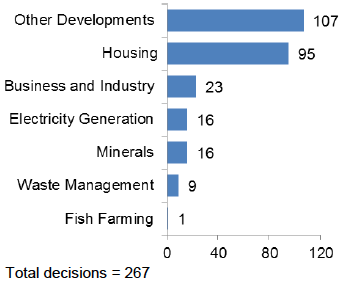
Chart 18: Post 3rd August 2009, Major Development Planning Applications, 2015/16: Average decision time (weeks)
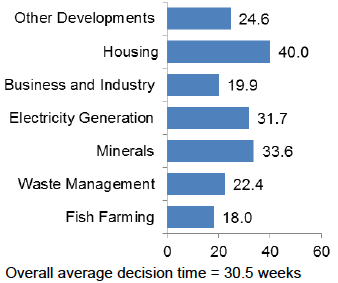
Chart 19: All Major Development Planning Applications, 2015/16: Number of decisions
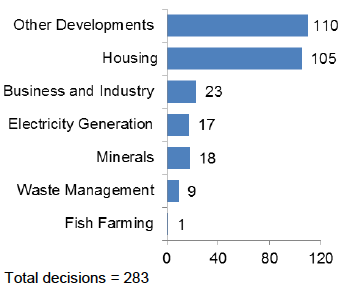
Chart 20: All Major Development Planning Applications, 2015/16: Average decision time (weeks)
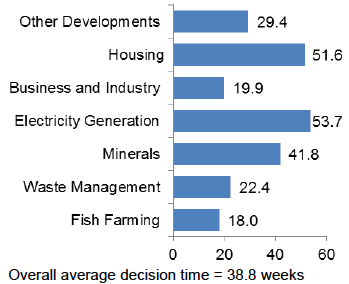
Due to the small number of applications for some types of major developments, average decision times may be volatile between types and years and can be skewed by a few lengthy decisions. See Annex 14.2 for further details.
The average decision time for the 267 post 3rd August 2009 major applications in 2015/16 was 30.5 weeks, quicker by more than 6 weeks per application compared with 2014/15 (36.6 weeks) and the quickest annual average since the start of this data collection in 2012/13. When the 16 legacy cases are included the average decision time increases from 30.5 weeks to 38.8 weeks.
Charts 17 and 18 show that a large share (almost 36%) of major developments is for housing developments that have an average decision time of 40.0 weeks. However, when the 10 additional legacy housing cases are included this average decision time increases by 11.6 weeks to 51.6 weeks. Legacy cases can skew average decision times. For example, when one legacy case is included in the average decision time for electricity generation, the average increases by 22.0 weeks from 31.7 to 53.7 weeks.
During the year 2015/16 over 37% of all major housing application decisions had involved a clock stop at some point within the application process. The average time stopped was 128.8 weeks for these applications, and this will have had an effect on overall average decision times. See Annex 14.1 for further details.
In addition there were a further 83 major development applications concluded in 2015/16 that were subject to separate processing agreements. Almost 69% of these applications met agreed timescales that had been set between developers and local authorities. Applications subject to processing agreements are not included in average time calculations.
Tables 3 and 4 give comparable figures for the previous three years. Between the years 2014/15 and 2015/16 (post 3rd August) electricity generation developments had the biggest improvement in average decision time from 53.6 to 31.7 weeks, whilst waste management developments had the only increase in average decision time from 18.4 to 22.4 weeks.
In Table 4 (all major applications) minerals developments had the biggest improvement in average decision time between 2014/15 and 2015/16, from 70.0 to 41.8 weeks.
Table 3: Post 3rd August 2009 major applications, Annual average decision times by Development Type
| Post-3rd August Major Developments | 2012/13 | 2013/14 | 2014/15 | 2015/16 | ||||
|---|---|---|---|---|---|---|---|---|
| Number of decisions | Average decision time (weeks) | Number of decisions | Average decision time (weeks) | Number of decisions | Average decision time (weeks) | Number of decisions | Average decision time (weeks) | |
| Other Developments | 66 | 34.3 | 105 | 25.9 | 101 | 28.7 | 107 | 24.6 |
| Housing | 76 | 40.1 | 117 | 41.9 | 113 | 41.3 | 95 | 40.0 |
| Business & Industry | 45 | 22.8 | 41 | 26.6 | 39 | 33.1 | 23 | 19.9 |
| Electricity Generation | 24 | 50.7 | 27 | 58.4 | 19 | 53.6 | 16 | 31.7 |
| Minerals | 21 | 46.6 | 13 | 20.6 | 16 | 52.1 | 16 | 33.6 |
| Waste Management | 5 | 22.3 | 7 | 23.7 | 9 | 18.4 | 9 | 22.4 |
| Fish Farming | 1 | 4.4 | 0 | - | 1 | 31.6 | 1 | 18.0 |
| TOTAL | 238 | 36.3 | 310 | 34.6 | 298 | 36.6 | 267 | 30.5 |
Table 4: All major applications, Annual average decision times by Development Type
| All Applications Major Developments | 2012/13 | 2013/14 | 2014/15 | 2015/16 | ||||
|---|---|---|---|---|---|---|---|---|
| Number of decisions | Average decision time (weeks) | Number of decisions | Average decision time (weeks) | Number of decisions | Average decision time (weeks) | Number of decisions | Average decision time (weeks) | |
| Other Developments | 73 | 46.2 | 115 | 38.7 | 103 | 32.9 | 110 | 29.4 |
| Housing | 104 | 74.8 | 147 | 69.9 | 125 | 54.1 | 105 | 51.6 |
| Business & Industry | 51 | 56.2 | 45 | 39.8 | 41 | 41.3 | 23 | 19.9 |
| Minerals | 23 | 47.4 | 15 | 59.0 | 17 | 70.0 | 18 | 41.8 |
| Electricity Generation | 28 | 64.4 | 27 | 58.4 | 21 | 69.1 | 17 | 53.7 |
| Waste Management | 7 | 87.4 | 7 | 23.7 | 10 | 24.8 | 9 | 22.4 |
| Fish Farming | 1 | 4.4 | 0 | - | 1 | 31.6 | 1 | 18.0 |
| TOTAL | 287 | 61.1 | 356 | 53.8 | 318 | 46.4 | 283 | 38.8 |
Contact
There is a problem
Thanks for your feedback